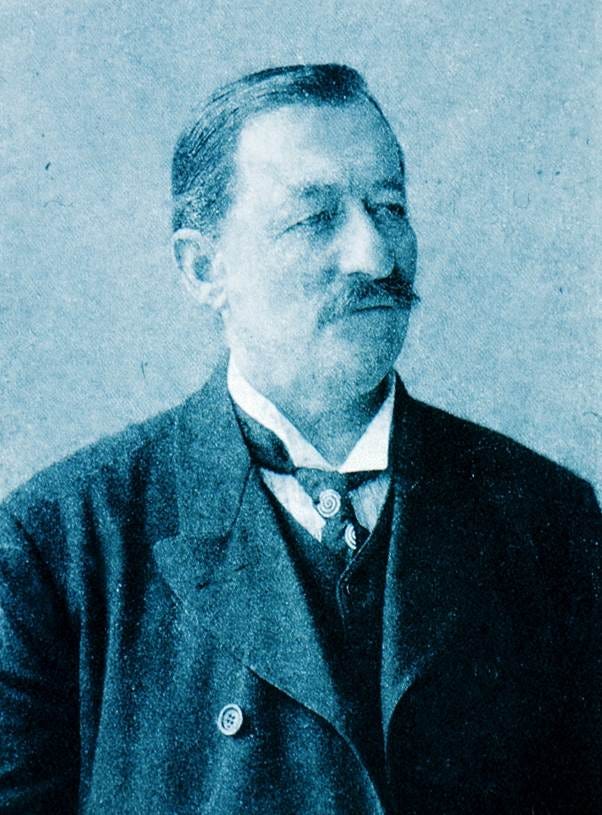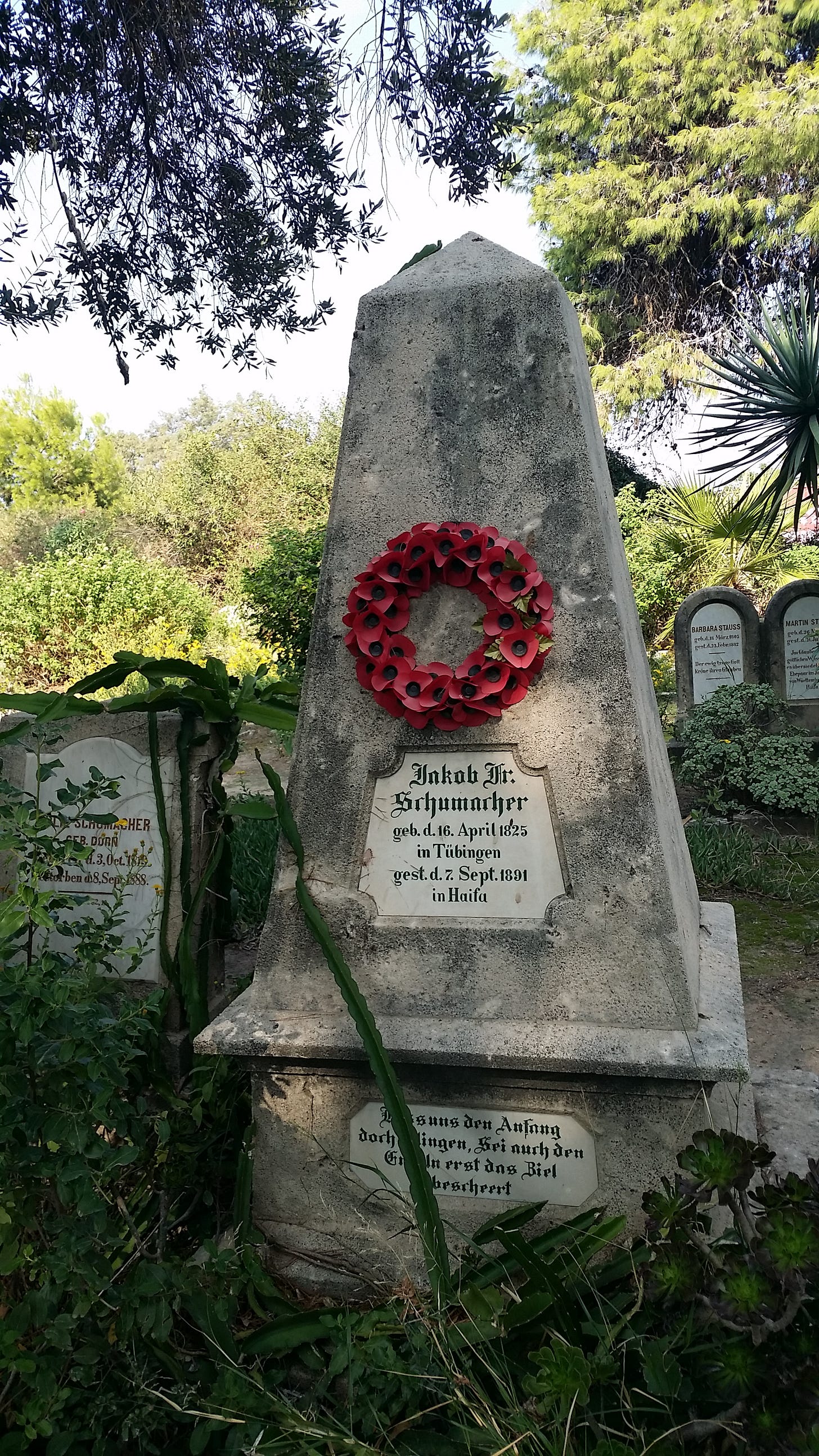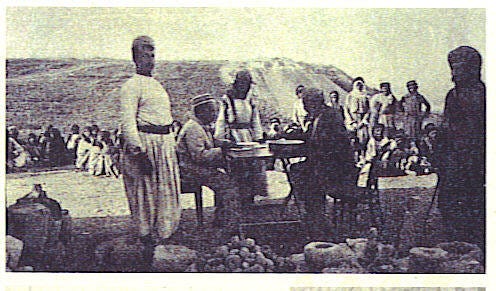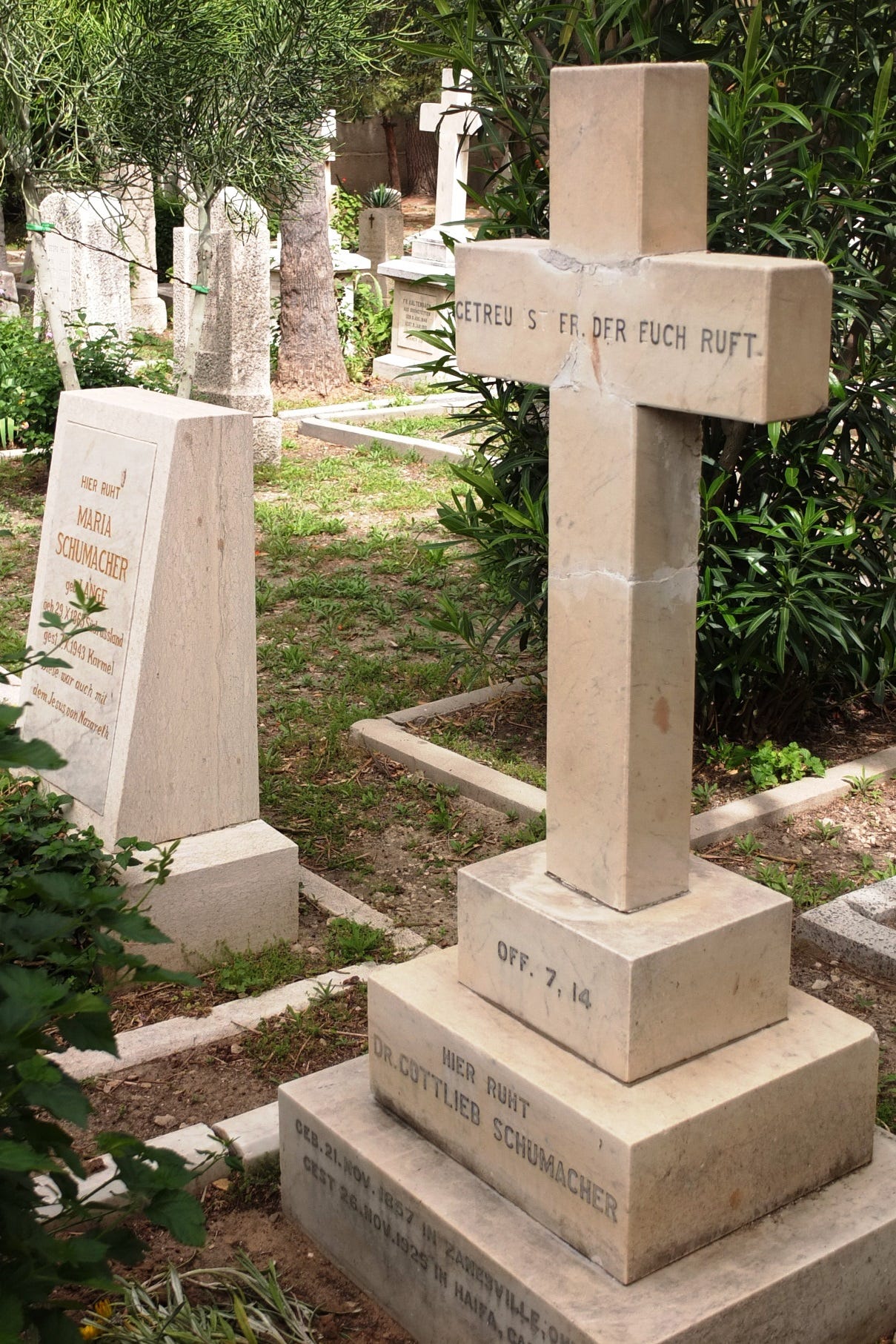Gottlieb Schumacher was born in 1857 in in Zanesville, Ohio, where his parents had immigrated from Tübingen, Germany. His father, Jacob, was a member of the Temple Society, a German Protestant sect which in the 1860s established the German Colony in Haifa. In 1869, Jacob Schumacher settled with his family their, where he became its chief architect and builder.
Gottlieb Schumacher was sent to study engineering in Germany, returning to Palestine in 1881. He quickly became a leading figure in the construction of roads and houses, and was appointed Chief Engineer for the Province of Akko by the Ottoman government. Among his many works were the Scottish hostels in Safed and Tiberias, the Russian hostel in Nazareth, the cellars of the Rothschild winery at Rishon LeZion, and the bridge over the Kishon River. One of his most important projects was the survey of the Golan, Hauran, and Ajlun districts, in preparation for the construction of the Damascus-Haifa railway, which branched off from the Hejaz railway at Deraa forming the Jezreel Valley Line. As part of the same development he also extended the mole of the port of Haifa.

In the course of this survey he produced the first accurate maps of these regions, along with detailed descriptions of the archaeological remains and the contemporary villages. From 1886 he published articles reporting his discoveries in the Zeitschrift des Deutschen Palästina-Vereins, the Journal of the German Society for Exploration of Palestine, reprinted in translation in the Palestine Exploration Fund’ Quarterly Statement, and he published a series of books, also reprinted in English by the Fund, becoming an important figure in the early archaeological exploration of Palestine. Schumacher’s maps of Transjordan and the Golan, prepared on behalf of the German Society for the Exploration of Palestine, were the first detailed maps of the area.
Among his discoveries was an ancient synagogue, dating from around the 5th century CE, at Khirbet Dikke, some three kilometres north of Lake Kinneret on the eastern bank of the Jordan River. But he is perhaps best know for his groundbreaking work at Megiddo—known in English as Armageddon, and in Arabic as Tell el-Mutesellim—where he excavated from 1903 to 1905. The first volume of his report on Megiddo, covering the stratigraphy and the architecture, was published in 1908. The second volume, a study of the small finds, was published in 1929, covering material which survived destruction during World War I.
Although Schumacher’s methods were typical among his contemporaries, his work was carefully recorded by the standards of the day, his reports illustrated with a wealth of photographs and simple but beautifully-drawn sections. His main excavated area at Megiddo was a trench 20–25 metres across, running north–south through the center of the mound, a method widely used in those days, though considered unfortunate by later archaeologists due to the very large amount of soil removed in a manner that offers little stratigraphic information to future researchers. For instance it meant that he overlooked the important stele fragment of Pharaoh Sheshonk I, identified with biblical King Shishak, which was later found in the pile of dump created by Schumacher’s trench, but by then out of its original stratigraphic context; if found in situ, it would have provided chronological evidence about the city from the time of Sheshonk’s campaign, related to the disputed historical existence of King Solomon.
Nevertheless Schumacher identified eight strata in his trench, dated to the Middle Bronze Age II-Iron Age II periods. His work was the basis for later excavations by the Oriental Institute of the University of Chicago in 1925-1939. He also uncovered a number of important buildings at Megiddo including part of the Early Bronze Age palace later fully uncovered in the Chicago excavations, an Iron Age IIA palace on the south side of the tel, from which he recovered a seal with a beautifully depicted lion and the words ‘Shema servant of Jeroboam’, and corbel-vaulted tombs with no parallels in the southern Levant.
With the outbreak of World War I, some members of the Templer community returned to Germany. Schumacher remained there until 1924, when he returned to his home on Mount Carmel near Haifa, where he died in 1925.






